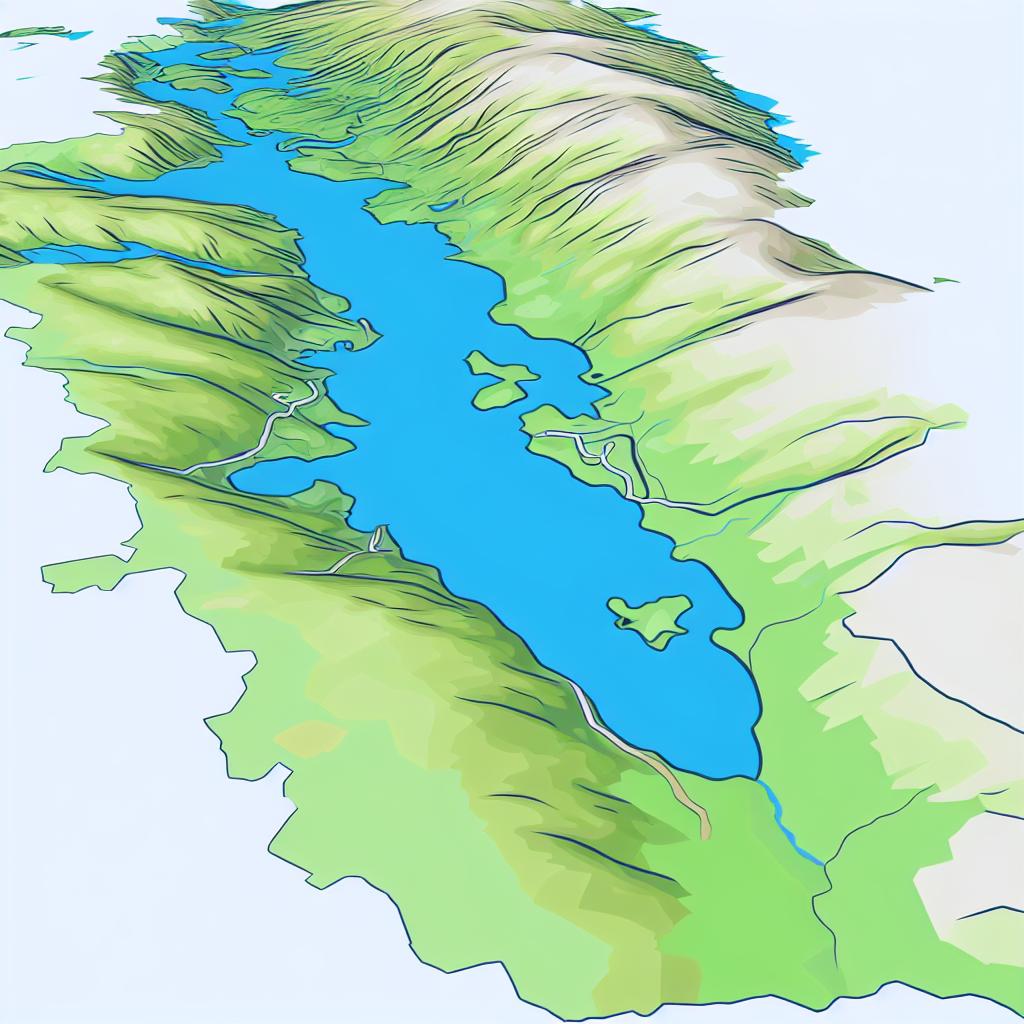Lakes in the United Kingdom
The United Kingdom is known for its stunning and diverse landscapes, featuring a wide array of beautiful lakes that vary in size, depth, and scenic appeal. These natural water bodies not only serve as spots of tranquil beauty but also have significant cultural, ecological, and economic importance for their regions. The following sections delve into some of the largest lakes across the UK, accentuating their unique features and offering a glimpse into their significance in both historical and modern contexts.
Loch Lomond
Loch Lomond is situated in the heart of Scotland and is noted as the largest lake by surface area in the United Kingdom. Encompassing around 71 square kilometers, it forms an integral part of the Loch Lomond and The Trossachs National Park, a region celebrated for its striking landscapes and diverse ecosystems.
Scenic Beauty and Activities: Loch Lomond is famed for its picturesque beauty, drawing countless nature enthusiasts and tourists each year. The loch features a myriad of islands, each with its own character and charm. Visitors can indulge in a variety of activities such as hiking, boating, water sports, and bird watching, making it a perfect destination for outdoor adventures. Moreover, fishing is a popular pastime here, with the waters teeming with species such as brown trout and salmon.
Ecological and Cultural Significance: The loch supports a wide array of flora and fauna, from ancient oak woodlands to rare bird species like the capercaillie and ospreys. Its cultural significance stretches back through history, with connections to traditional Scottish music, literature, and folklore, embedding it deeply in the national consciousness. For further exploration, one may visit the Loch Lomond and The Trossachs National Park Authority website.
Loch Ness
Loch Ness is a jewel of the Scottish Highlands, renowned globally not just for its stunning natural backdrop but also for the longstanding mystery of the Loch Ness Monster, which has arguably positioned it as one of the most famous lakes globally.
Physical Characteristics: As the largest lake by volume across the British Isles, Loch Ness boasts a surface area of approximately 56 square kilometers. However, it is the incredible depth, plunging to around 230 meters, that distinguishes it. This depth contributes to its startling dark water, owing to the sediments that the River Ness brings from surrounding glacial valleys.
Tourism and Science: The intrigue around “Nessie” has despite the naysayers, driven extensive tourism and scientific inquiry. Visitors often embark on boat tours, hoping for just a glimpse of the infamous resident. In addition, the loch’s unique geology and ecology make it a valuable site for scientific research. For those interested in exploring its mythical and scientific aspects, the Visit Inverness Loch Ness page provides in-depth insight.
Lough Neagh
Lough Neagh, located in Northern Ireland, holds the distinction of being the largest freshwater lake in the UK by surface area. Encompassing approximately 383 square kilometers, it plays a critical role economically, environmentally, and culturally in Northern Ireland.
Ecological Importance: Lough Neagh serves as a crucial reservoir for water supply and an essential habitat for a variety of wildlife. Its shallow waters and fertile environment support diverse populations of birds and native fish species, making it important for both biodiversity and recreational fishing activities.
Cultural and Economic Influence: Historically, Lough Neagh has been a central part of local life, influencing agricultural practices and serving as an important transport and trade route. Today, it sustains local livelihoods through agriculture, fishing, and tourism. The rich cultural history, along with ongoing conservation efforts, can be explored through the Discover Lough Neagh site.
Windermere
Situated within the Lake District National Park, Windermere stands as the largest natural lake in England. With its dramatic 17-kilometer length amid the rolling fells, it forms an iconic centerpiece of the park.
Recreational Activities and Attractions: The lake invites a plethora of recreational activities, including sailing, rowing, and leisurely boat cruises, which are particularly popular. This natural retreat offers a peaceful sanctuary away from city life, accentuated by charming villages and trails that provide breathtaking vistas.
Cultural and Natural Heritage: The Lake District, famously listed as a UNESCO World Heritage Site, acknowledges the region’s outstanding cultural and natural heritage. Windermere, with its celebrated literary associations, particularly with poet William Wordsworth, adds rich layers to the area’s historical narrative. Current visitor information and guides are available through the Lake District National Park Authority.
By exploring these lakes, one can appreciate the diverse landscapes, rich biodiversity, and cultural histories these bodies of water are associated with. They symbolize more than just geographical features; they are integral components of the identity, heritage, and economy of their respective regions within the UK. Additionally, they serve as reminders of the natural beauty and ecological significance that underpin much of the UK’s scenic allure. Whether for education, conservation, or leisure, the lakes across the United Kingdom continue to offer unparalleled experiences and insights.
